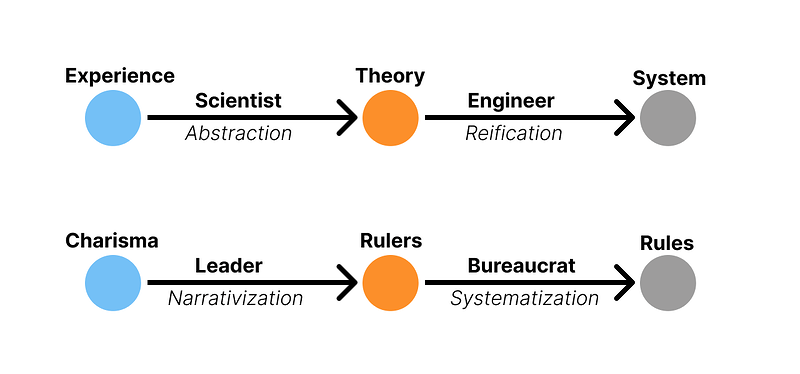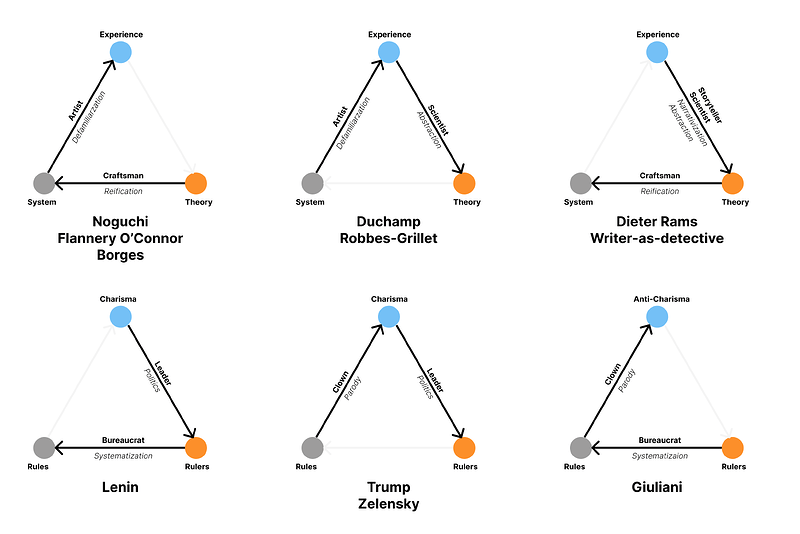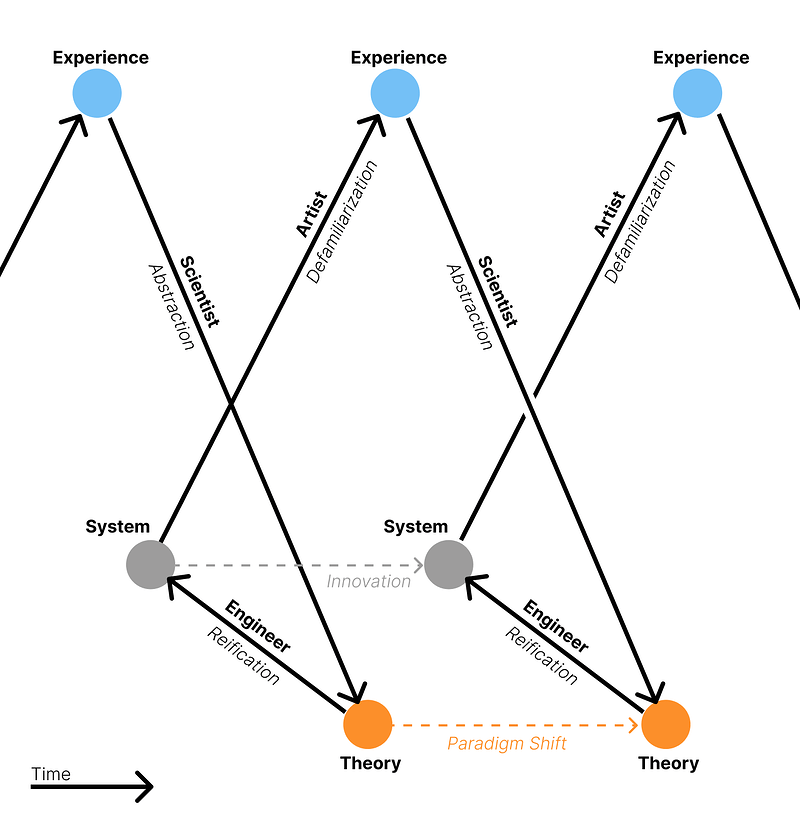Cycles of knowledge
by Cristóbal
Different domains speak differently of the way knowledge is held. A psychoanalyst may speak about the real, imaginary, and symbolic, whereas a sociologist may be inclined towards the categories of charisma, rulers, and rules. Slightly higher in abstraction, we find the categories of experience, theory, and systems.
Each domain denominates types of agents that work towards transforming knowledge between its forms. A scientist transforms experience into theory through abstraction, and an engineer transforms that theory into a system that operates autonomously, through reification. Analogous structures appear in the domain of politics.

This is not a straightforward progression. At the end of the road, the system or rules that is established can’t represent everything There’s a forgotten excess. This one of the insights of psychoanalysis, which denominates this excess the Real while also finding a role for those that break outside of the symbolic. We can think of this process as a cycle.

The parallelism between these structures is the central point. In each domain, the triad is manifest is different ways while preserving a fundamental meta-structure. Because of the parallelism, we are able to ask: “what corresponds to the schizophrenic in the domain of science or in the domain of politics”. This introduces the figures of artist and clown.
Similarly, the precise words chosen don’t quite matter either. For example, instead of abstraction, reification, and defamilizariation, you may prefer the terms formalization, exploitation, and subversion.
Different movements along these domains can be exemplified by examples of concrete actors. The parallelism in structures permits us to understand these examples under a variety of parallel categories.

The aim is not to define a person as responsible for a single style of movement, but rather to show how different actors are operating on knowledge in different ways.

This process is not actually a cycle. The new system we land at is not the same as the previous time around. Rather, it spirals in time. We can apply this to processes operating together over time, across different individuals.

A bit more ambitiously, we can represent this in three dimensions.

When we advance from one system to the next, we call it innovation. A shift in theory is what we call a paradigm shift. Interestingly, for both to happen, they need to go through the other forms of knowledge.